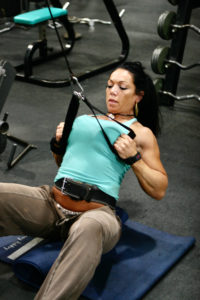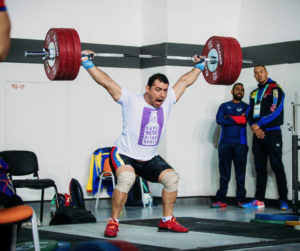Why I Don’t Use Percentages to Determine Loads

A practical approach to determine exercise resistance
By Strength Sensei CP
I usually determine the repetition bracket I want my athletes to train in and let the repetitions determine how much weight they should use. I realize that many elite weightlifters and powerlifters use percentages to design their workouts, but these systems have many shortcomings. Let’s go over five of them.
First, each muscle group has a different fiber-type distribution. For example, the quads (primarily Type IIa) respond differently to a specific intensity prescription than the hamstrings (Type IIb). An athlete who uses 90 percent of their one-repetition maximum (1RM) on the leg press might perform 20 reps in a set, whereas they may only be able to complete 5 reps with that same percentage on a leg curl. (Incidentally, a great reference on muscle fiber types is La Forza Muscolare by Carmelo Bosco, PhD.)
Second, neurological efficiency changes with training age. As an athlete gets stronger, they need to shift towards using weights that are closer to their 1RM to achieve the same training stimulus.

Although most weightlifters use percentage-based training systems, allowing the reps to determine the load is a more practical approach for bodybuilding and general strength training. (Photo by Viviana Podhaiski, LiftingLife.com; Lead photo by Miloš Šarčev)
Third, training history influences the percentage curve. For example, elite rowers can often do 12 reps at 97 percent of maximum, while the average trainee will do 1 to 2 reps. Likewise, focusing on aerobic training will increase the number of repetitions an individual can perform at a given percentage of their 1RM by influencing neurological efficiency.
Fourth, percentage systems lock the athlete into specific weights, regardless of what the athlete is capable of lifting that day. If the athlete is not having a good training day, then the weights would be too heavy; and on a good training day, too light.
Fifth, many athletes get frustrated trying to follow precise percentage-based workouts and may increase their risk of injury. Let’s say a football player is told to perform 90 percent of their best deadlift for three sets of two reps and they miss both reps on that first set. Rather than reducing the weight, they may continue trying that same weight for their remaining sets, thus subjecting themselves to a greater risk of injury as their technique becomes compromised.
The bottom line is that with all the variables that can influence an athlete’s performance on a given day, including what time of day the athlete lifts or how much sleep they got the night before, it is nearly impossible for a coach to predict the exact weights an athlete can lift.
Rather than giving you a single repetition number for each exercise, I use a range, such as 4-6 reps. If you reach a point where you cannot perform the lower number on a subsequent set, terminate the workout. The focus is on quality, not quantity.
Since reps for a given time under tension determine the training effect, let the reps dictated, not the load dictate the reps. (SS)
